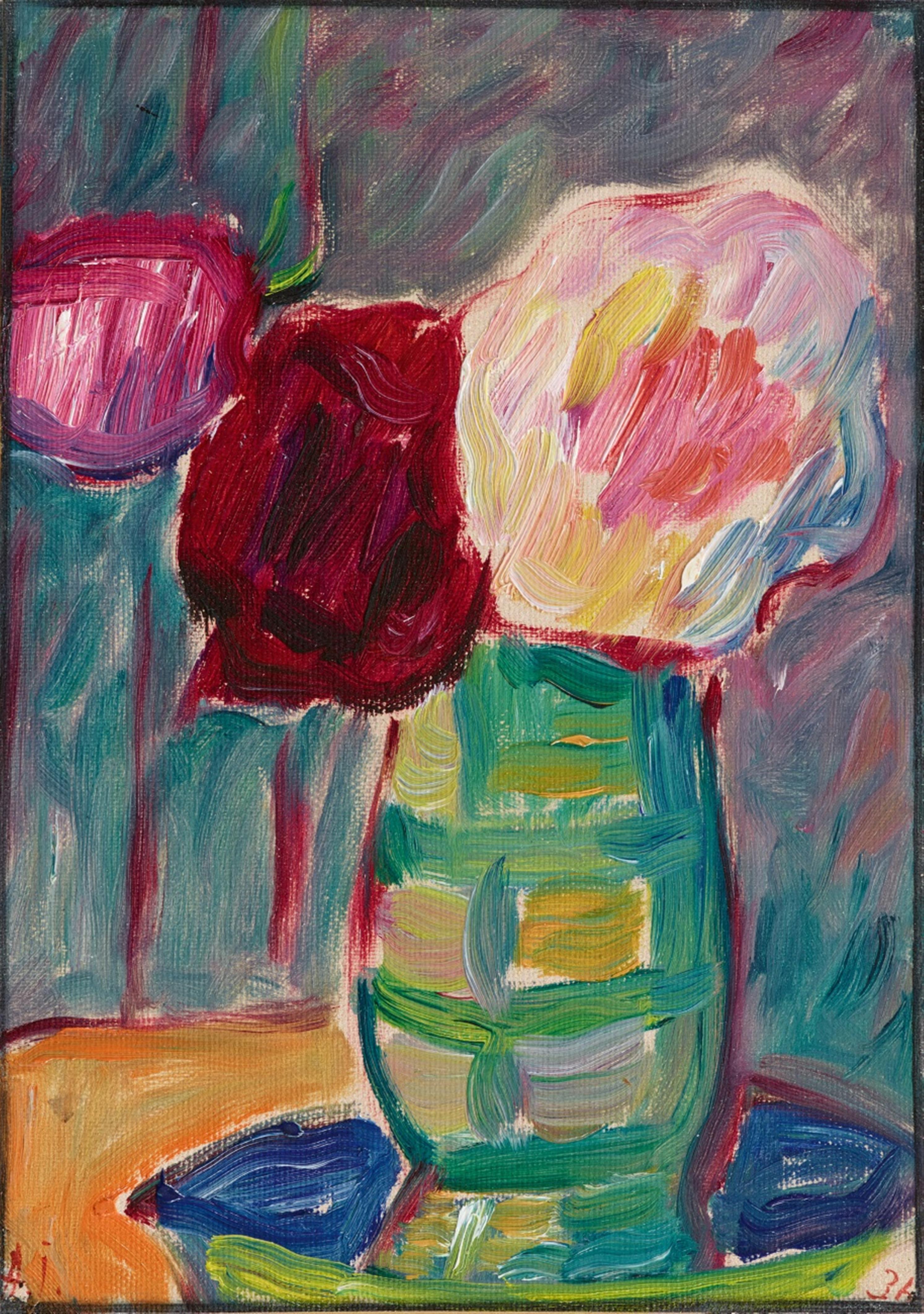Alexej von Jawlensky
Grosses Stilleben: Blumen in bauchiger Vase
1936
Oil on firm linen-textured paper, laid down on card (42.5 x 32.5 cm) 25.2 x 17.3 cm Framed under glass. Monogrammed and dated 'A.J. 36' in red lower left as well as well as signed, dated and inscribed verso on the card 'A. Jawlensky 1936. VI. N.1.' in black ink. - In very fine condition with vibrant colours. With drawing pin holes in the corners.
The floral still lifes - like the mystic heads and the “Meditationen” - are variations on an unchanging motif.
Following the dissolution of the artists' group “Der Blaue Reiter” and Alexej von Jawlensky's being forced by the war to move to Switzerland - as a Russian citizen, it was no longer possible for him to reside in Germany after the start of the First World War - the artist had already selected the same unvarying detail seen from the window of his house in Saint-Prex as the stage for his views of the same seasonally varying motif, recording the vegetation in his garden in his so-called “Variationen”.
In the 1930s the severely ill and nearly immobilised artist worked in small formats and repeated the same motifs, such as flowers or "Heilandsgesichte", again and again. It seems as though the artist, in his repetition of the same subjects, was now distilling the essence out of a motif and, in doing so, depicting the universally valid aspect of an object. Naturally, no two floral paintings or Saviour's faces are alike. However, it is no longer additional outward influences that feed into the individual paintings, as in the case of the earlier “Variationen”, but the different inner states of the deeply religious artist, similarly to a journal.
“From 1934 he was forced to drastically reduce the size of his pictures [for medical and financial reasons], nonetheless, he began his last series of paintings: the meditations and the late floral still lifes. […] These were usually painted on the textured paper that he treasured so much and which he, Lisa Kümmel or his friend, the artist Alo Altripp from Wiesbaden, glued on to thin Bristol board. The dimensions of the meditations created in 1934 and 1935 were 17 x 13 cm; from 1936 onwards, there was also the format of 25 x 17 cm. The floral still lifes display the same measurements; however, in the rare hours in which he was free from pain, Jawlensky joyfully created larger-format works full of vitality.” (Angelica Jawlensky Bianconi, Alexej von Jawlensky: “Ich meditiere mit Farben”, in: exhib. cat., Alexej von Jawlensky, Jena 2012, p. 17).
Our painting is distinguished by its larger format, which is filled with luxuriant flower heads in full bloom, and its emphatically cheerful and colourful tonality. The floral still life is an expression of the joy Jawlensky felt at nature's beauty.
Catalogue Raisonné
Maria Jawlensky/Lucia Pieroni-Jawlensky/Angelica Jawlensky III 2004. We would like to thank Angelica Jawlensky Bianconi, Alexej von Jawlensky-Archive S.A., Muralto, for additional information.
Provenance
Private collection; Kunsthaus Lempertz, Cologne, Kunst des XX. Jahrhunderts, Auction 497, 30 Nov. 1967, Lot 381 with illus. p. 12; Private collection, South Germany

